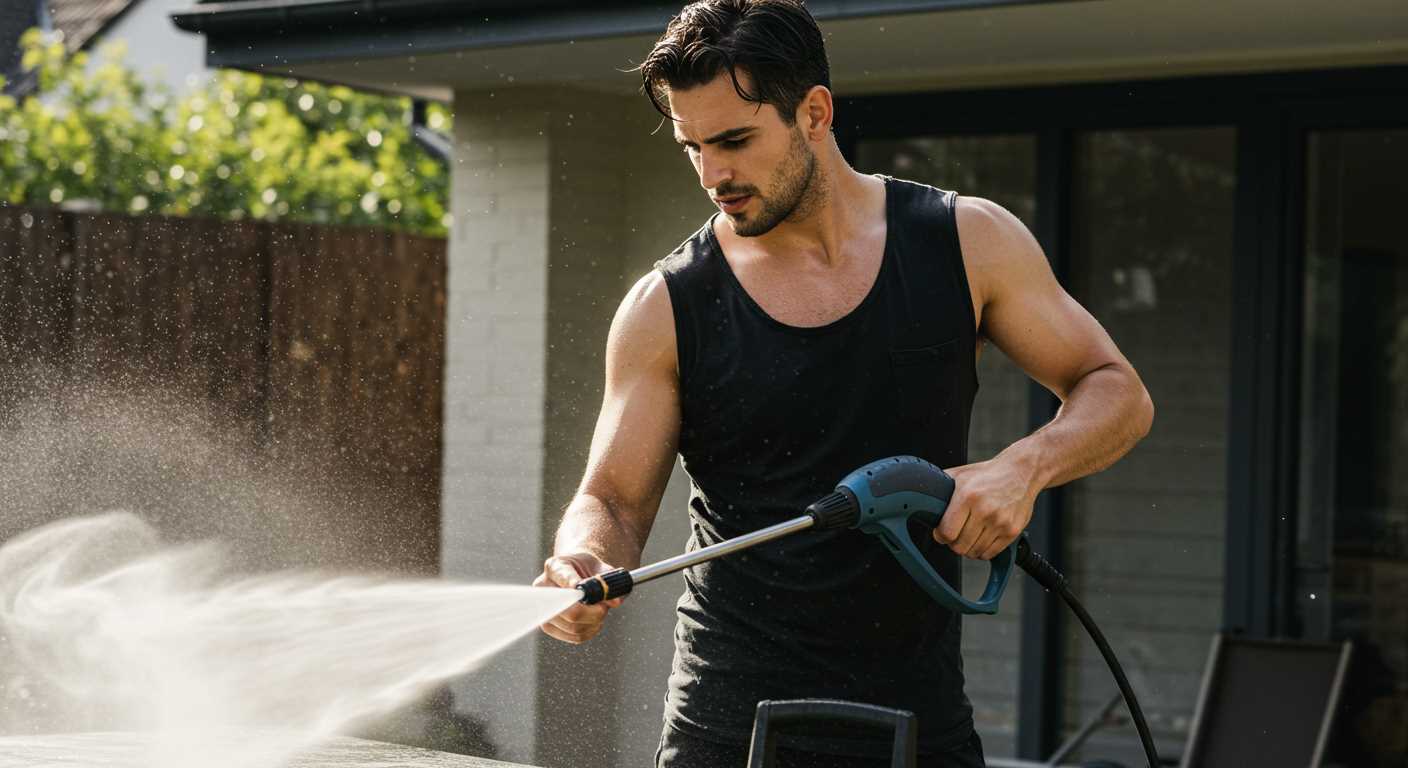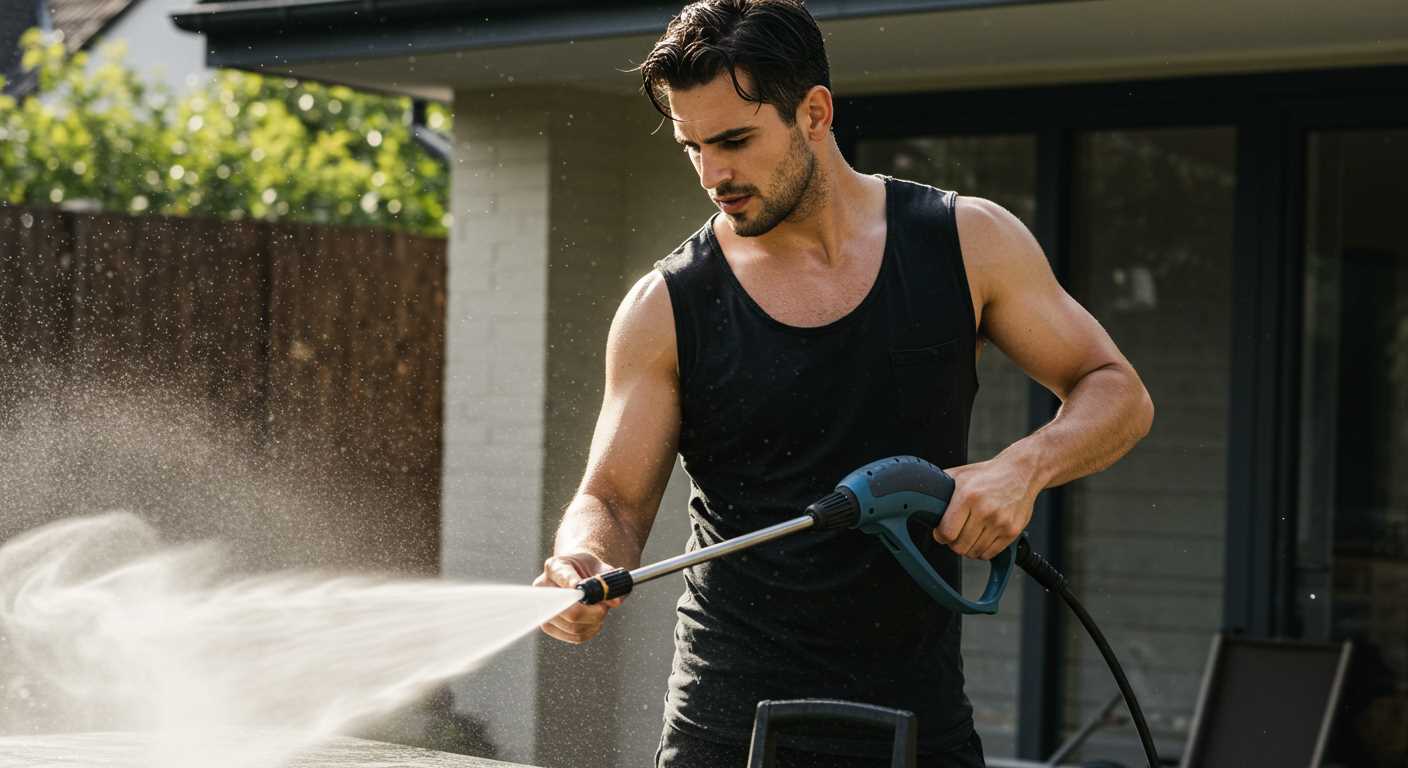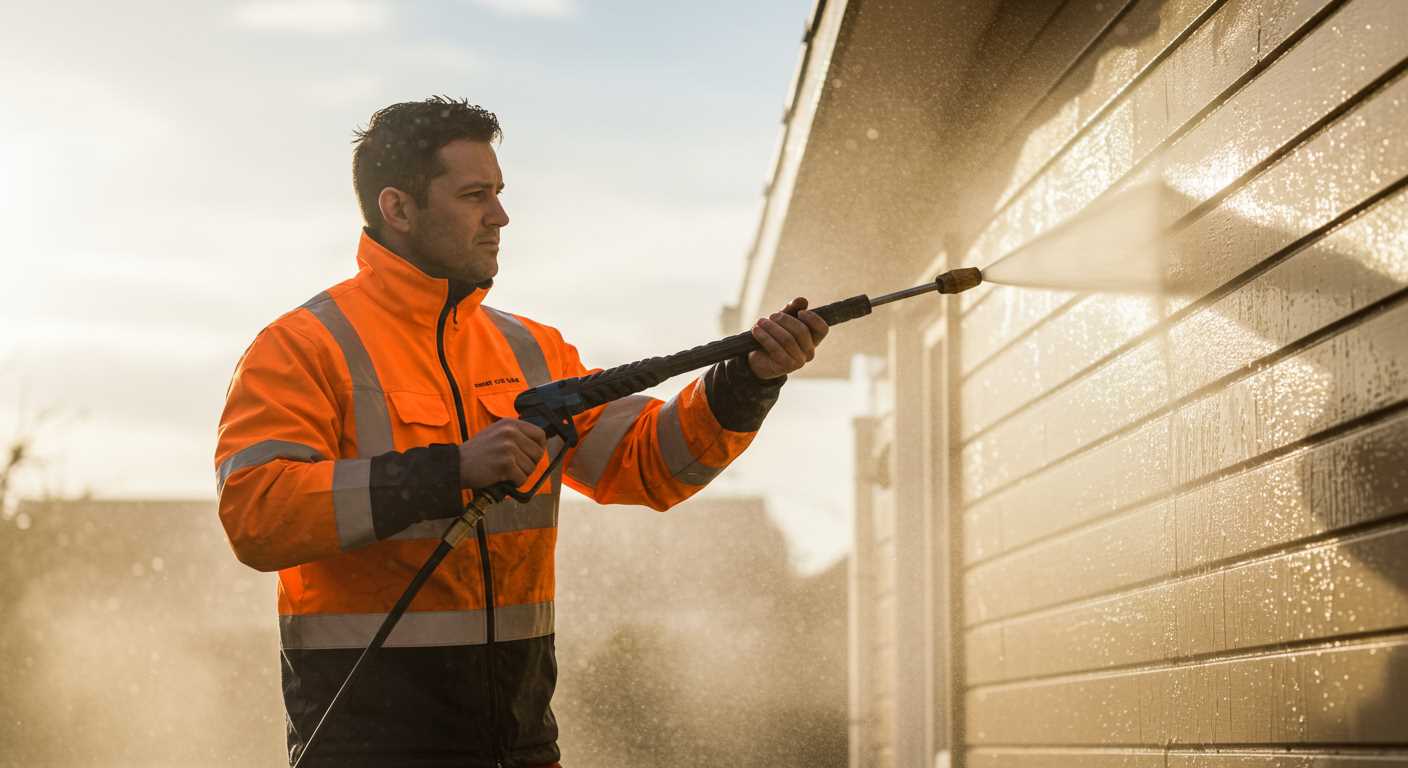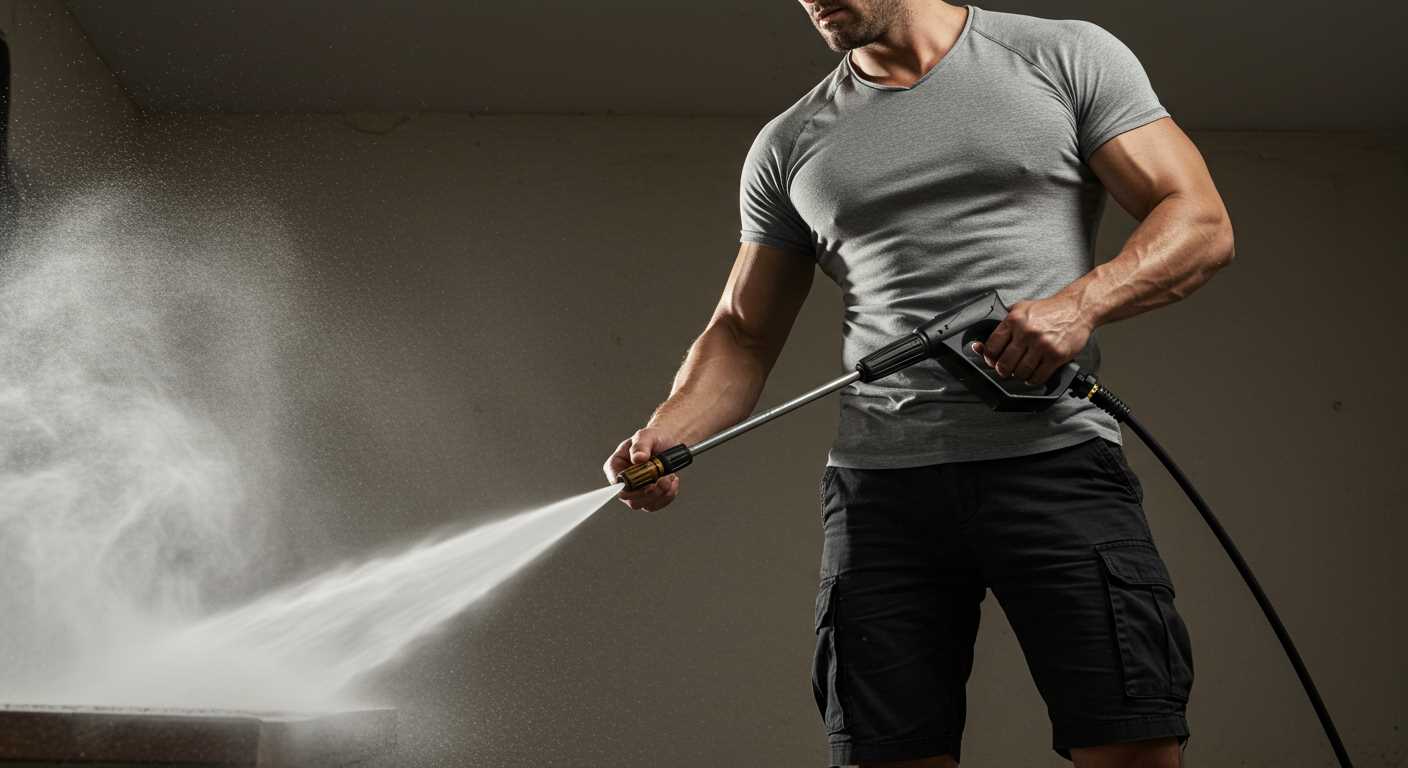




Utilising a high-pressure cleaner can significantly reduce the amount of water consumed during outdoor cleaning tasks. In my experience, using these machines can lead to a decrease in water usage by up to 80% compared to traditional methods like hoses or buckets. This efficiency stems from their ability to blast dirt and grime away using only a small volume of liquid, allowing for thorough cleaning without the waste.
In practical terms, I’ve observed that many homeowners notice a change in their utility bills after incorporating this equipment into their cleaning routines. It’s not uncommon for users to report a substantial drop in monthly charges, especially during the summer months when outdoor cleaning activities peak. For instance, one client I worked with was amazed to find that their water bill decreased by nearly £30 after switching from a garden hose to a high-pressure device.
To maximise these benefits, I recommend using the right nozzle and pressure setting for specific tasks. For instance, a wider spray pattern can clean larger surfaces without consuming excessive water, while a concentrated jet is more effective for stubborn stains. Understanding how to adjust these settings not only optimises cleaning performance but also minimises water usage, making it a win-win scenario for both cleanliness and conservation.
Understanding Water Flow Rates of Pressure Washers
To optimise performance, consider the flow rate of your cleaning device, typically measured in litres per minute (LPM). Most models range from 5 to 15 LPM. Selecting a unit with a higher flow rate can significantly enhance cleaning efficiency, especially for larger surfaces or stubborn grime. For instance, I once tested a model with a 15 LPM output while tackling an extensive deck restoration. The time saved compared to lower flow options was remarkable, allowing me to complete the job in a fraction of the usual time.
Matching Flow Rates to Tasks
It’s crucial to match the flow rate with the task at hand. For light tasks like cleaning patios, a machine with a flow rate around 5 to 8 LPM suffices. However, for heavy-duty tasks such as stripping paint or deep cleaning driveways, you’ll want something in the 10 to 15 LPM range. I recall a project where I used an 11 LPM unit for removing years of built-up dirt from a concrete driveway. The results were impressive, with minimal effort needed on my part.
Impact on Water Consumption
When assessing water consumption, higher flow rates lead to increased usage. It’s essential to consider your water supply limits. For instance, using a unit with a 15 LPM flow rate for an hour results in 900 litres of water consumption. In contrast, a 5 LPM unit only uses 300 litres in the same timeframe. I often advise clients to evaluate their water supply before choosing a machine, as exceeding local limits can lead to additional costs or interruptions in service.
Comparing water consumption: pressure washing vs traditional methods
To achieve superior cleanliness while minimising water usage, opting for a high-powered cleaning machine is the way to go. My hands-on experience in the field has shown clear distinctions between conventional cleaning techniques and modern equipment.
- Consumption Rates: Traditional methods, like garden hoses, generally release around 9 to 12 litres per minute. In contrast, many high-efficiency machines operate at rates of 5 to 8 litres per minute, depending on the model and settings.
- Surface Coverage: With a cleaning tool, you can cover larger areas in a fraction of the time. For instance, cleaning a driveway with a typical hose may take hours, while a machine can complete the same task in under an hour, resulting in reduced overall water consumption.
- Targeted Cleaning: The concentrated jets from modern devices allow for effective removal of dirt without excessive spraying. This means less liquid is needed for deeper cleaning, unlike scrubbing with buckets and sponges, which often leads to wasted resources.
- Detergent Use: Traditional cleaning often requires a significant amount of soap mixed with water, increasing overall fluid consumption. In many cases, machines can achieve similar results with less or no detergent, further conserving resources.
In my experience, utilising a robust cleaning tool not only conserves resources but also elevates cleaning standards. When I first switched from conventional methods to machines, I was astonished by the efficiency. What once took me an entire afternoon now finished in less than two hours, all while using significantly less fluid. This transformation not only benefits the environment but also results in noticeable savings on utility bills.
In summary, choosing a modern cleaning device optimises usage, allowing for quicker, more effective cleaning with reduced resource expenditure. The long-term benefits are clear, both financially and environmentally.
Impact of Nozzle Types on Water Usage and Meter Readings
Choosing the right nozzle can significantly influence the volume of liquid consumed during cleaning tasks. From my experience, a wide fan nozzle, typically rated at 25 degrees, tends to use more fluid compared to a narrower jet, like the 0-degree nozzle. The latter focuses the output, increasing pressure while minimising flow, leading to lower consumption and reduced readings on the meter.
For instance, during a recent job where I used a 15-degree nozzle to tackle tough stains, I noticed a marked increase in fluid usage. While the cleaning was quick and efficient, the meter reflected this higher consumption. In contrast, applying a 40-degree nozzle for general dirt removal required less liquid, showcasing how nozzle selection directly correlates to the amount recorded by the meter.
Additionally, adjustable nozzles offer versatility but can also lead to fluctuating water usage. During various tasks, I found that setting the nozzle to a wider spray often led to excessive liquid being drawn. Conversely, using a pinpoint stream for stubborn grime significantly reduced waste. The key takeaway is to assess the job at hand and select the nozzle that balances effectiveness and efficiency.
In my years of testing, I’ve learned that even the angle of spray affects consumption. A direct spray at a closer range can clean efficiently while using less, whereas a wider angle may necessitate more fluid to achieve the same results. Ultimately, understanding these nuances can lead to more mindful usage, saving resources and keeping meter readings in check.
Seasonal variations in water meter readings during pressure washing
During warmer months, the frequency of outdoor cleaning can lead to noticeable spikes in consumption readings. In my experience, homeowners often underestimate how much water their cleaning habits can consume when the sun is shining. For instance, I’ve seen increases of up to 40% in meter readings during peak cleaning seasons, especially in late spring and summer.
In colder months, the situation changes. Many individuals reduce their outdoor cleaning activities, resulting in lower readings. However, I’ve encountered several clients who, despite the chill, use their equipment to clear driveways or prepare for seasonal gatherings. These occasional uses can still impact the readings, albeit to a lesser extent than in milder weather.
It’s also essential to consider rain. Wet weather can deter outdoor cleaning, leading to decreased usage and lower meter readings. I recall a project where a client postponed a major cleaning until the skies cleared, ultimately resulting in a significant dip in their monthly water consumption.
For those looking to minimise costs and monitor their consumption, I recommend keeping track of your meter readings before and after cleaning sessions. This practice helps to understand your usage patterns, allowing for more informed decisions about when and how often to clean.
Interestingly, some homeowners have raised queries about the effects of electric fences on their pets, leading to discussions about water usage and cleaning habits. For insights on that, check out this link: can dogs sense an electric fence.
In conclusion, understanding seasonal variations can empower you to plan your cleaning routines better, saving both water and money in the long run.
Tips for Minimising Water Usage While Pressure Washing
Utilise a trigger gun with a lock-off feature. This allows you to control the flow easily, reducing unnecessary spillage when moving between areas. It’s a simple change that can lead to significant savings.
Select the appropriate nozzle for your task. A narrower spray pattern provides more pressure while using less liquid. Opt for a zero-degree nozzle for stubborn stains and a wider nozzle for rinsing surfaces, striking a balance between power and consumption.
Maintain your equipment regularly. A well-functioning unit operates more efficiently, preventing leaks that contribute to excess usage. Replace worn-out seals and check for any blockages to ensure optimal performance.
Consider using a mold and mildew remover for pressure washer instead of excessive scrubbing. This reduces the amount of water needed for rinsing and speeds up the cleaning process.
Plan your cleaning sessions strategically. Avoid washing during peak heat hours; cooler times of the day help to reduce evaporation, allowing you to use less liquid effectively.
Collect and reuse greywater when possible. Setting up a collection system can repurpose water from previous tasks, making your process more sustainable.
Finally, keep an eye on your surroundings. Removing debris and loose dirt before washing can lessen the amount of liquid needed to achieve a clean surface, ensuring a more economical approach overall.





.jpg)


